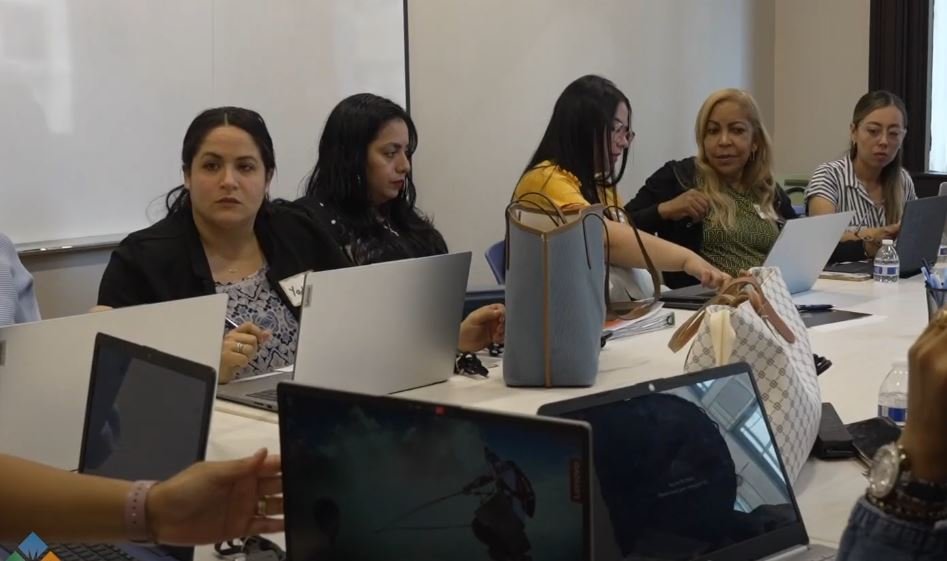
Urban College of Boston serves as something akin to a lifeline for innumerable students who might have been excluded from higher education otherwise. Officially established in 1993, but with roots in an Action for Boston Community Development program from decades before, the organization has become a representation of perseverance and inclusivity.
The college’s choice to meet students where they were at the time was especially creative. Urban College accepted students with bilingual teaching rather than requiring flawless English proficiency prior to admission. With courses available in Mandarin, Spanish, and English, Boston’s vibrant neighborhoods—from East Boston to Chinatown—are represented. This decision has been incredibly successful in making education accessible to working professionals who balance obligations with great tenacity, immigrants, and single parents.
Urban College of Boston – At a Glance
| Category | Details |
|---|---|
| Name | Urban College of Boston |
| Type | Private, nonprofit community college |
| Founded | 1993 (originated in 1967 under ABCD) |
| Location | 2 Boylston Street, 2nd Floor, Boston, MA 02116 |
| President | Dr. Yves Salomon-Fernández |
| Enrollment | 550–1,100 students annually |
| Tuition | About $7,600 (2023–24), with over 90% receiving aid or scholarships |
| Languages of Instruction | English, Spanish, Mandarin |
| Popular Programs | Early Childhood Education, Human Services Administration, General Studies |
| Accreditation | New England Commission of Higher Education |
| Website | urbancollege.edu |
The demographics of Urban College provide a compelling narrative. Nearly 70% of students identify as Hispanic or Latina, 93% are female, and the typical student is 36 years old. Because the college offers flexible, highly efficient scheduling—day, evening, online, and hybrid options—many people manage caregiving while working full-time jobs. It feels so flexible, almost like a system of instruction made for the real world instead of brochures.
Another pillar has been affordability. In comparison to other universities in the area, its tuition, which is approximately $7,600, is already remarkably reasonable. However, more than 90% of students obtain scholarships or financial aid, which drastically lowers their expenses. This concept, which is based on grants rather than loans, has significantly increased access while minimizing debt loads. Urban College shows that education may be incredibly resilient without ruining financial futures in a nation that is frequently blamed for student loan difficulties.
Both vision and pragmatism are reflected in the academic programs. Students enrolled in early childhood education programs are prepared to work as teachers in Boston’s preschools and childcare facilities, a field with a pressing need for qualified teachers. The Human Services Administration places graduates at the center of social support networks by directing them toward community jobs, such as case management and counseling. In contrast, general studies serves as a springboard, assisting many students in transferring to four-year schools with a more robust academic program.
The tenacity of Urban College has been put to the test. Its very survival was under danger ten years ago due to financial difficulties. Fears of closure were raised in 2011 when the institution experienced a deficit due to the abrupt withdrawal of federal financing. By 2012, there were talks about joining forces with Endicott College. However, the college was able to stabilize itself through partnerships, contributions, and sheer willpower. The experience demonstrated the college’s strong ties to the community; for the thousands of people it served, closing its doors would have been unimaginable.
Equally important has been leadership. The college’s aim has been broadened under Dr. Yves Salomon-Fernández, but it has remained remarkably clear: education for the underserved. In a time when discussions about inclusion, diversity, and equity have dominated national news, Urban College provides more than just words—it provides concrete evidence. Its open-door policy and multilingual classes represent a uniquely creative approach to higher education.
Classrooms are not the only places affected. Graduates spread throughout the city’s organizations, health services, and early education facilities, improving social support networks and expediting operations. Every graduate is a multiplier, and their accomplishments greatly enhance both their personal lives and the communities in which they live. It serves as a motivating reminder that education has an impact on cities and futures and does not exist in a vacuum.
In order to continue teaching during the epidemic, Urban College relied on its pre-existing hybrid model. For students who had to deal with unexpected job losses, childcare emergencies, and health concerns, this flexibility was incredibly dependable. Long before Zoom became a household name, Urban College had been ingraining flexibility into its own fabric, in contrast to larger schools that were frantically trying to adapt. This foresight strengthened the institution’s reputation for flexibility and made the move noticeably easier.
You can feel the intimacy as soon as you enter the China Trade Center campus. The student-teacher ratio is 10 to 1, making mentoring feel intimate. Teachers frequently take on the roles of advisors, confidants, and advocates in addition to being teachers. Many times, students spoke of instructors who stayed late, gave them access to resources, or just pushed them to continue. In that regard, the environment is especially advantageous, fostering resilience in addition to academics.
It is impossible to overestimate the importance of Urban College to Boston’s educational system. Although it runs on a very different ideology, it is on par with esteemed universities like Harvard, MIT, and Boston University. Urban College opens its doors where prestigious universities typically gatekeep through selective applications. The comparison between community-driven accessibility and boutique exclusivity is remarkably similar. While everyone may have a role, only one guarantees that no one is left behind.
Urban College of Boston provides a model for future discussions regarding equality, debt, and access in higher education. Its emphasis on community service, bilingual education, and affordability feels especially creative, and its adaptability shows what can happen when learning is tailored to individuals’ needs rather than making them conform to inflexible frameworks.
In the end, Urban College demonstrates something extraordinary: that learning may be both hard and adaptable, both compassionate and rigorous. Its goal keeps growing, and its history of survival and development tells a tale of hope. Urban College serves as a strikingly successful illustration of how higher education can—and should—develop in a city known for its variety, resiliency, and ambition.











